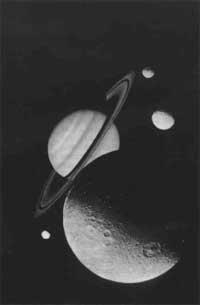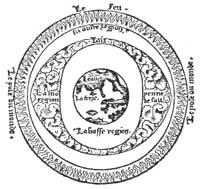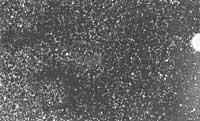Mikolaj Kopernik
1991/01/01 Azkune Mendia, Iñaki - Elhuyar Fundazioa Iturria: Elhuyar aldizkaria
This Polish astronomer was born on February 19, 1473 in Thorn. By the death of his father when he was young Copernicus, he studied by his uncle bishop. In Krakow he began to study mathematics and drawing until in 1496 he moved to Italy. There, in Bologna and Padura, he spent the season until 1503, studying medicine, canon law and astronomy.
In the Italian atmosphere, flavors questioned the traditional models of the universe. In the model of Hiparko and Ptolemy, celestial bodies revolved around the Earth according to complex laws. But despite being mathematical expressions, the model did not serve to predict the position of the planets. The tables of King Alfonso X were the best in the previous centuries. Johan Müller Regio montanus introduced corrections to the tables, but in spite of that they were only useful in part.
According to Copernic, the tables for predicting the position of the planets could be better calculated by taking the Sun instead of the Earth as the center of the universe. Therefore, it had to be considered that the Earth was spinning around the Sun like all other planets.

The truth is that this idea was not new. Aristarchus, for example, had already launched this idea in ancient times, and Nicholas of Cusa, years earlier.
However, Kopernik, in addition to providing the idea, developed the entire mathematical system to calculate the situation of the planets from this idea. To do this, it seems that Copernicus was not long looking at the sky, as he did not dominate the field of astronomical observations. They say he never saw the planet Mercury, closest to the Sun.
The Copernic system solved many movement problems of the planets. In the new system, the orbits of Mercury and Venus did not move further than a certain distance from the Sun seen from Earth, as both planets were closer to the Sun than the Earth. On the other hand, the Earth turned to a smaller orbit than Martitz, Jupiter and Saturn, so it was ahead of the latter, which seemed to recede into space.
Moreover, the precession of the equinoxes discovered by Hipparchus could be explained differently. The entire celestial sphere did not have to turn into the Copernican system. The Earth was the one that revolved on its axis and the axis itself described two conical surfaces around its center.
According to Copernicus, the celestial spheres were far from the Earth and their position did not affect the Earth's movement. Therefore, the Copernic system was not only used to calculate the positions of the planets, but also to calculate what they have right now (also to calculate what the Earth has).
However, there were some problems because Copernicus considered the orbits of the planets as circles and that the problems mentioned were considered elliptical a half century after Kepler would solve.
Copernicus formed a book in which he expressed his whole system, but dared not publish it for understanding that the Earth had movement as a heresy.
In 1503 he returned to Poland and, being his uncle bishop, was named alley in the cathedral of Frauenburg. But no priest was ordained. He was a doctor of his uncle and also worked in the administration (especially after the death of his uncle).
In the meantime, he summed up his ideas in a scribe named Commentariolus and had great esteem among the European flavors. Mathematician Rheticus asked Koperniki to publish his book. Rheticus also offered to supervise and comb the book.
Unfortunately, Rheticus had to leave the city and leave the book to a Lutheran pastor to review it. Luther was not in favor of the ideas of Copernicus and the Lutheran pastor put the prologue to the book, stating that the doctrine of Copernicus did not alter any existing theories. He said that the tables of the planets only served to facilitate their use.
This prologue devalued the book and Copérnik's fame also staggered for many years believing that the prologue had been made by him (Kepler in 1609, however, clarified who the prologue was).
The book of Copernicus was published in 1543 and it is said that on the day of his death he was taught his first number. He died in Frauenburg (now Frembork) on 24 May 1543.

Gai honi buruzko eduki gehiago
Elhuyarrek garatutako teknologia




